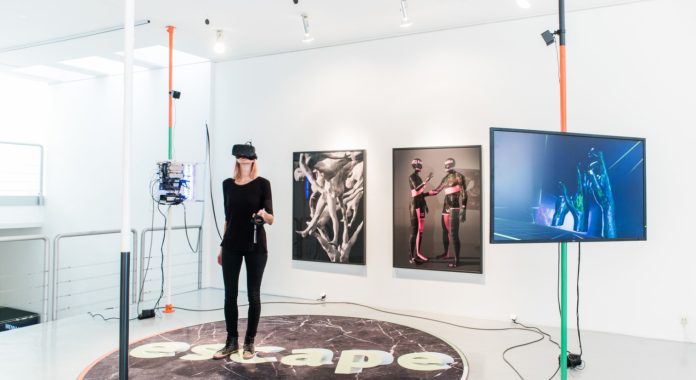As we get stuck into the 21st century, the number of emerging technologies available can be a little overwhelming at times. From AI to 5G, we’re seeing a near-exponential development of advanced technological solutions to a wide range of issues. One of those areas seeing incredible advances is VR.
Virtual reality (VR) technology has the potential to revolutionise the way companies create and present their exhibition stands. VR allows companies to create immersive and interactive experiences, that can help to engage visitors in a more powerful, meaningful, and memorable way.
True immersion
One of the key benefits of using VR in exhibition stands is this; it allows companies to create highly detailed and realistic environments, that would otherwise be impossible to replicate in the physical world. This can help to create a sense of immersion and engagement that simply cannot be achieved with traditional exhibition stand designs.
Increased interaction
VR can also be used to create interactive experiences, that allow visitors to explore products and services in a more hands-on way. For example, a company that produces architectural models and designs could use VR to create a virtual walkthrough of a building or development, allowing visitors to explore the space and see it from various different perspectives.
This can help to create a more engaging and informative experience for visitors, allowing them to see more of the creative vision behind the project, and can help to differentiate the company from its competitors.
Expanded audience reach
Another benefit of using VR in exhibition stands is that it allows companies to reach a wider audience. Unlike standard stands, with VR, companies can create virtual experiences that can be shared online, allowing people from all over the world to experience what they have to offer without needing to be physically present at the event. This can be particularly useful for companies with international outreach, that attend trade shows or exhibitions that are held in various different locations around the world.
Potential drawbacks
However, it’s worth noting that creating a VR exhibition stand can be a complex and expensive process. It can require a significant investment in equipment and software, as well as the expertise of skilled developers and designers. Additionally, VR experiences can be difficult to create and execute effectively, so companies may need to put in a lot of time and effort to create an experience that’s both engaging and effective. That being said, VR is becoming increasingly accessible and affordable, meaning even small businesses will be able to afford to play around with it in the near future.
Clearly, VR does have the potential to revolutionise the future of exhibition stands. It may be a young technology, but with the rapid breakthroughs we’ve seen in recent years, it’s becoming increasingly accessible. Exhibition stand designers like Focal Exhibitions will be able to advise further on whether or not it’s suitable for your exact niche, but it’s likely that with a little investment and creativity, VR will soon become a staple part of most businesses’ marketing outreach.


































